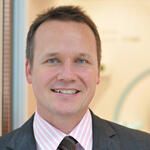Ultrahigh field magnetic resonance meets AI
The use of magnetic resonance imaging (MRI) at 1.5 Tesla has long been a standard part of clinical practice. And about one in five major hospitals already has a 3-Tesla machine. “The number of heart scans being performed with magnetic field strengths of 7 Tesla is still small,” says Professor Thoralf Niendorf, one of the organizers of the virtual symposium and an expert in ultrahigh field magnetic resonance (UHF MRI) at the MDC. But he says advances are continuing to be made: “Thanks to conceptual work regarding the basic feasibility of cardiac MRI at 10.5 and 14 Tesla, we are now opening the door to the next generation of MRI.”
Earlier detection of changes in kidney size
High-precision image recognition is needed to use the extra information for diagnostic purposes. This is where artificial intelligence (AI) comes into play. For it is only through a fusion of AI, machine learning, and deep learning that the potential of UHF MR can be fully exploited, enabling a previously unattainable level of detail in anatomical and functional images. The jump from 1.5 to 10.5 Tesla improves image resolution by a factor of 10. “This means a resolution of 100 micrometers – in vivo!” says Niendorf enthusiastically. “The technology provides live MRI images that you can zoom in on and look at as if using a microscope.”
- UHF MR at the MDC
-
-
MDC research teams are working with cooperation partners to develop new techniques for using ultrahigh field magnetic resonance in cardiovascular, cancer, and neurological research. At the Experimental and Clinical Research Center (ECRC) of the MDC and Charité – Universitätsmedizin Berlin, the scientists have a 3.0 Tesla MRI and a 7.0 Tesla whole body scanner at their disposal.
“One interesting medical application involves automatically determining the sizes of organs such as the kidney and tracking how they change over time,” explains Niendorf. Pathophysiological stimuli that occur in clinical scenarios – for example, oxygen deficiency, renal vein or artery constriction, or the influence of X-ray contrast media – often lead to acute renal failure. This is usually detected too late. The only clues so far are certain markers in urine. Using UHF MR would allow the change in size of the sensitive organ – within the range of 2 to 7 percent – to be detected at an early stage, and kidney damage in patients could be prevented by rapid intervention. This has already worked in mouse models.
Highlights of the symposium
One interesting medical application involves automatically determining the sizes of organs such as the kidney and tracking how they change over time.
“For me, one of the highlights of the symposium will be the talk by Bilguun Nurzed from my team, who will look at antenna concepts for human cardiac MRI,” says Niendorf. Along with the magnets, the antennas (detectors) are the most important components of an MRI scanner. This is because they are used to generate and receive the signals that produce the images. Conventional antenna technology is no longer sufficient to support field strengths of 10.5 Tesla or more.
In the field of neuro MRI, Niendorf is keen to hear the talk by Professor Kamil Ugurbil from the Center for Magnetic Resonance Research (CMRR) in Minneapolis, where scientists are gaining initial experience with human brain scans at 10.5 Tesla. Clinicians are hoping this will allow for a much more precise diagnosis of multiple sclerosis and dementia – and do so non-invasively and in vivo. Basic researchers expect to gain important new insights into the connectivity of brain regions and the functioning of the brain.
Observing digestive processes in real time
Professor Lucio Frydman of the Weizmann Institute of Science will share how his team is using UHF MR to study metabolic processes, a field which is still purely experimental. Serving as the signal generator is not the density of protons in the tissue but that of deuterium, a hydrogen isotope. Frydman’s team is injecting mice with deuterated glucose and tracking how it is digested in the rodents’ bodies.
AI has become indispensable
“The synergies between UHF MR and AI run like a red thread through almost every talk at the symposium,” stresses Niendorf. “At the same time we are undertaking a thematic reorientation of our annual symposium.” The keynote talks by Dr. Kyle Harrington (MDC) and Professor Christoph Lippert (Hasso Plattner Institute) underscore this new direction. For example, Christoph Lippert will discuss how machine learning is refining the diagnosis of specific diseases, so that physicians can intervene in the disease process at a much earlier stage.
“The symposium is intended as a platform for early career scientists and is open to everyone free of charge: from basic scientists, application experts, engineers, and translational researchers to students and trainees,” stresses Niendorf. The talks will take place in different time slots so that interested scientists from different time zones can participate.
- About the UHF MR Symposium
-
-
The MDC’s UHF MR Symposium is modeled on the conferences held annually by the U.S. scientific organization Keystone Symposia on Molecular and Cellular Biology. The MDC organizes the symposium in cooperation with the Weizmann Institute of Science in Rehovot, Israel, and the Hasso Plattner Institute in Potsdam. The cooperation between the MDC and Weizmann Institute of Science is part of iNAMES – the MDC-Weizmann Helmholtz International Research School for Imaging and Data Science from the NAno to the MESo.
Text: Catarina Pietschmann
Further information
Contact
Prof. Dr. Thoralf Niendorf
Experimental Ultrahigh-Field MR Lab
Max Delbrück Center for Molecular Medicine in the Helmholtz Association (MDC)
49-(0)30-9406-4504
thoralf.niendorf@mdc-berlin.de
MRsymposium@mdc-berlin.de
Jana Ehrhardt-Joswig
Editor, Communications Department
Max Delbrück Center for Molecular Medicine in the Helmholtz Association (MDC)
+49-(0)30-9406-2118
jana.ehrhardt@mdc-berlin.de or presse@mdc-berlin.de






